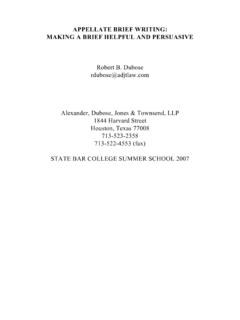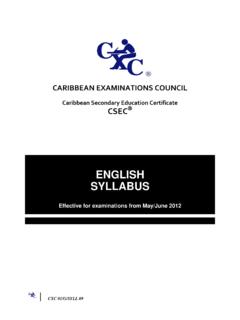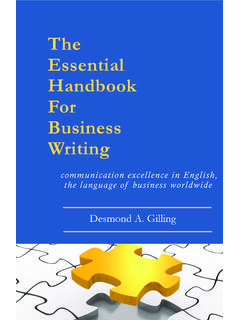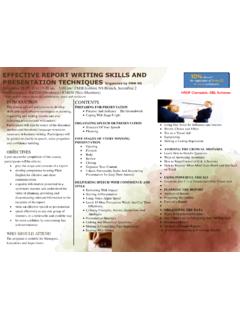Transcription of Lesson Skill: Persuasive writing - VDOE
1 English Enhanced Scope and Sequence Lesson Skill: Persuasive writing Strand writing SOL Materials Copies of a nonfiction article Sticky notes Copies of the attached Class Controversy handout Interactive computer board or overhead projector Highlighters Sample Persuasive essay Lesson DAY ONE 1. Ask students to think about a time that they tried to persuade a friend or parent during an argument or discussion. What makes a good Persuasive argument? Students either free-write a response or discuss in small collaborative groups. Reiterate sound arguments, detailed support, and logical connections between ideas. 2. Students discuss debatable topics that connect to their current reading.
2 Divide the class into an even number of small groups. Provide each group with a prompt for debate. Each group s prompt matches one other group, but the two groups argue opposite sides. For example, for the prompt In the story, is the character Sir Gawain brave?, one group will argue YES he is brave, while the other group will argue NO he is not brave. 3. Students brainstorm ideas for detailed support. Provide each student with a pad of sticky notes. Give students a few minutes to list as many facts and details as possible on the sticky notes (one fact per note). Then, allow students to collaborate within their groups. They combine and organize their ideas by creating different piles of sticky notes, beginning to form a Persuasive argument.
3 4. Distribute the Class Controversy handout. Using the sticky note brainstorm, each group identifies at least four major supportive details for a Persuasive argument. Encourage students to refer to the text for support as well. Students record the groups major ideas on one side of the chart. 5. Groups share their arguments with the entire class. If there are more than four groups, it may be more efficient to have small groups meet individually. As other groups report, students take notes on their controversy charts. Further class discussion may emerge with the presentations; encourage the development of the arguments and counterarguments. 6. After all groups have presented, give groups time to confirm or revise their arguments.
4 Explain that by using the Class Controversy handout they have created a basic outline for a Persuasive English Enhanced Scope and Sequence essay. Students now have thorough arguments, possible counterarguments, and details listed on the chart. For homework, each student selects a particular stance on their topic and writes a draft of their Persuasive essay. DAY TWO 1. Using an interactive computer board or projector, show the students a sample Persuasive essay. Read the essay to the students. As a class, identify and underline the thesis statement of the essay. Highlight supportive arguments that the author uses in the essay. 2. Students sit in the debate groups once again with the rough draft of the paper and a highlighter.
5 Instruct students to underline the thesis3. Assign each student a partner from their opposing group. Students peer edit and revise the essays, focusing particularly on the writer s use of Persuasive arguments and supportive details. As students read, they highlight the support found in the essay. Then, the partners discuss each paper. Together, students skim through the essay, and indicate whether the highlighted support was strong (+) or weak (-). In the cases of weak support, partners discuss and add changes to strengthen the Persuasive paper. Encourage them to cite the text. of their own paper. Remind them that a truly effective Persuasive paper has a clear and focused argument. 4. After the revision session, students type a final draft of the Persuasive essays.
6 As a class, discuss: o What makes a strong Persuasive argument? o How did collaborative brainstorming help the writing process? o Why is it important to have a clear thesis in a Persuasive essay? o Why is it helpful to have someone with a different point of view revise your paper? Strategies for Differentiation Free write model Text to speech/scribe/transcribe Brainstorming organizer Editing organizer or checklist Chart paper for each group sticky note organizer ease of manipulation Move modeling of sample essay to before writing draft Begin all drafting of essays in classroom eliminate overwhelming feeling for students Provide sentence starters for students Provide list of transition words for student use in Persuasive essays Graphic Organizer Effective Persuasive essay checklist English Enhanced Scope and Sequence Class Controversy!
7 Create a developed Persuasive argument through the class discussion: 1. Generate ideas through your individual brainstorm. 2. Collaborate with your group to organize the ideas into solid arguments. Write at least four of these supportive arguments in the appropriate box below. 3. As other groups present, take notes! Their ideas present possible counterarguments and may also inspire more ideas to defend your side of the argument. Prompt Group 1: PRO Group 2: CON


















